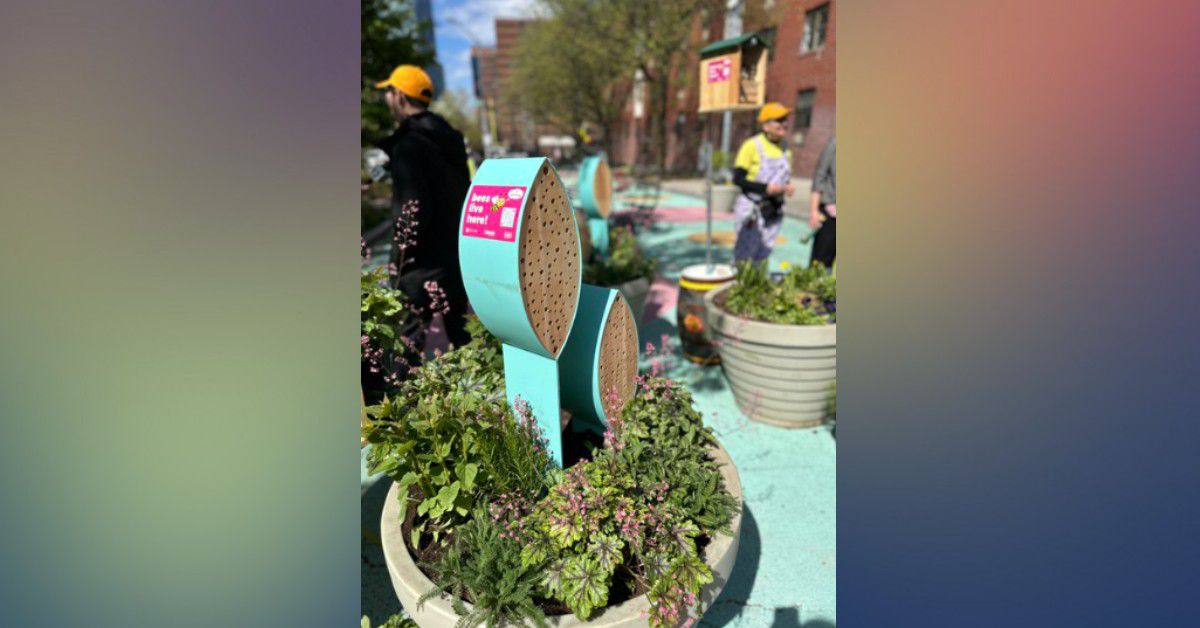The city on Thursday during Earth Week started a series of hotels and bunkers in public squares and streets for endangered native bees, where they have vegetation for food and other pollination.
The commissioner of the city’s Department of Transportation, Ydanis Rodríguez, the group in charge of the Puerto Pollinator Project, indicated that in addition to creating a habitat, the initiative will include research on the movement and behavior of bees.
He pointed out that, according to the United Nations Environment Programme, bees are essential to the planet and are a vital part of the biodiversity necessary to sustain life.
Bees have fewer habitats in urban areas and often fly long distances between green areas in large cities.
Rodríguez explained that these ‘bee houses’ will have connections to other green areas and will attract shiny bees, a small native species that rarely sting, according to reports.
“Our open streets and public squares have always been full of activity, but this year they will be the best,” said Rodríguez, who launched the project today with the New Horticultural Society York and Rutgers University (of New Jersey).
“No, this is not a $4,000 one-bedroom apartment in Manhattan…it’s a bee hotel! ðŸ
“We introduced the Pollinator Harbor Project to create habitats for endangered native bee populations in New York City,” read a message on social media from the Department of Transportation.
No, this isn’t a $4,000 one-bedroom apartment in Manhattan…it’s a bee hotel! Yes
Introducing the Port Pollinator Project to create habitats for endangered native bee populations around NYC: https://t.co/rn8Eaaoz50 pic.twitter.com/eIsbjK8AY7
— NYC DOT (@NYC_DOT) April 25, 2024
The Horticultural Society and the Department of Transport are changing many of the plants in public squares and streets to perennials, including a large number of native and pollinating plants.
For her part, Kimberly N. Russell, a professor in the Department of Ecology, Evolution and Natural Resources at Rutgers University, who will conduct the research, pointed out that most bees cannot live in huts and “that’s why we have to give them away. other materials to build their homes.
The first stages of this project have involved using science to design habitats with the greatest likelihood of success, he noted.
“We hope that these pollinator ports will connect green areas, giving bees the resources they need to move around the city and pollinate our flowers,” he said.
‘Bee hotels’ are like horns filled with natural materials such as reeds and bamboo which are ‘rooms’ where females build their nests and lay their eggs.
During the winter, the developing larvae are kept safe and comfortable until they are ready to emerge in the spring.
Digger bees tend to stay close to their habitat and usually forage within three or four blocks of where they live; They are calm and rarely bite.
The bunkers will be placed within existing plant to minimize human interaction.
____
We invite you to visit us on the new NY1 Noticias channel on WhatsApp. There you will find the most relevant news about what is happening in New York, as well as other coverage about the rest of the country, Latin America and the world. click in this connection to access the channel. We thank you in advance if you are one of our followers and express your opinions on what we publish with emoji.
2024-04-25 19:32:00
#York #protect #bees #hotels #bunkers


